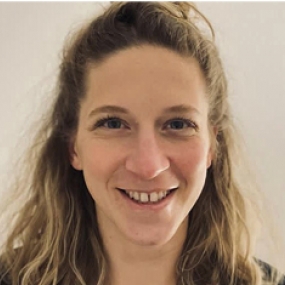The national impact of COVID-19 on anaesthesia and critical care services

Dr Emira Kursumovic is an ST7 anaesthetist in Bath and HSRC-NAP7 clinical research fellow. She leads work on anaesthesia and critical care COVID activity tracking surveys called ACCC-track.
When COVID-19 emerged, few imagined the degree of disruption that would result, and the devastating effects on perioperative care and surgery. Amid the challenging times we’ve faced, the College’s seventh National Audit Project (NAP7), due to be launched in May 2020, had to be put on hold.
Thanks to the NAP7 local coordinators network, we have performed a series of snapshot surveys in response to a concerning spike in COVID-19 cases and the second national lockdown in England in November 2020. The aim of the surveys was to understand the national pressures on perioperative services and critical care. Round 1 (October 2020) reflects the pre-lockdown period. Round 2 (early December 2020) corresponds to the situation after the second lockdown and before the emergence of the Kent variant led to a secondary surge.
We used ICM COVID hub criteria to assess departmental functions, describing the ‘space, staff, stuff (equipment) and systems’ needed for sustaining elective surgery. In October 2020, more than half of departments were either struggling to function (amber) or were unable to function normally (red). By early December, this had deteriorated to nearly 70 per cent being amber or red. Forty per cent of respondents reported the situation surrounding perioperative care delivery had worsened between October and December.
In December 2020, one in five operating theatres were closed compared to the corresponding period in 2019. To counteract the loss of theatre time and facilitate ‘lower COVID-19 risk’ surgery, 62 per cent of hospitals were undertaking surgery at external sites including within the independent sector. Further, in those operating theatres that were open, they were working at well below normal activity.
There has been a 25-28 per cent reduction in surgical activity overall: an estimated 5,500 fewer operations each day across the UK, equivalent to more than a million operations lost in a year. Among surgical specialties the falls in surgical activity in December compared to the corresponding month in 2019 were:
- 36 per cent of non-cancer surgery
- 35 per cent paediatric surgery
- 25 per cent cancer surgery
- 10 per cent emergency surgery.
Staffing levels have been significantly impacted with an 18 per cent depletion in the anaesthesia workforce. This includes staff absent because of COVID-19 infection, shielding and/or quarantining, self-isolation, redeployment to non-patient facing activities or to critical care. Between October and December, the number of staff redeployed to ICU had increased by almost 50 per cent with the ICU workforce increasing around 60 per cent.
On 7 February 2021, more than 29,000 patients remained hospitalised with COVID-19 in the UK and more than 3,500 patients were on mechanical ventilation. Sir Simon Stevens, the chief executive of NHS England recently stated “the huge accelerations” in COVID-19 hospital cases have had a direct impact on NHS services and recognised the “huge pressures on anaesthetists” as they are redeployed to cover critical care departments.
He goes on to report that “we are most concerned about cancer surgery” and that there is a “huge pressure on the NHS to deliver this care”, with emphasis on patients whose condition necessitates surgery within one month. Reflecting the devastating impact on this group of patients, NHS England recommend that cancer surgery be given equal priority to patients with COVID-19.
The ACCC-track surveys have illustrated, to some extent, the strain on NHS perioperative services, but simply by chance of when Rounds 1 and 2 of the surveys were undertaken they are likely to have underestimated the most severe episodes. We have now completed Round 3 specifically seeking to gather information from January 2021, and full analysis of this data will be out shortly. A final round is planned for May/June and will monitor the extent of recovery and inform us how best to support hospitals by guiding national policies and enabling advancement of the perioperative care agenda in the recovery period. We strongly encourage local departments to continue to engage with this work.
We know the effects of COVID-19 on anaesthetic services will be long lasting and it is important to recognise that any attempt to recover too quickly could be counterintuitive. The ICM COVID hub criteria has recently posted a document regarding the challenges of restarting surgery in a safe secure and sustainable manner. We are hoping to start the main NAP7 sometime this year.
We are grateful for the immense collaboration and support from colleagues for completing the ACCC-track surveys at such short notice. Our ability to react appropriately to this data is credit to the busy departments and anaesthetists who have completed the surveys at such a challenging time.
Dr Emira Kursumovic
